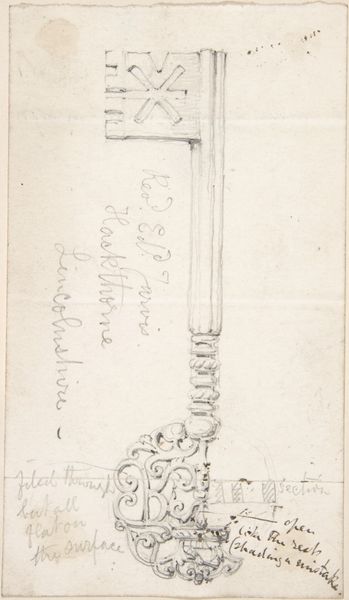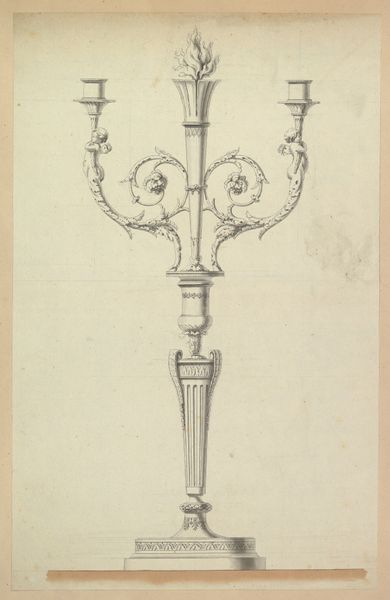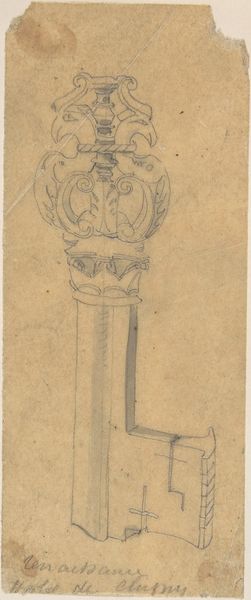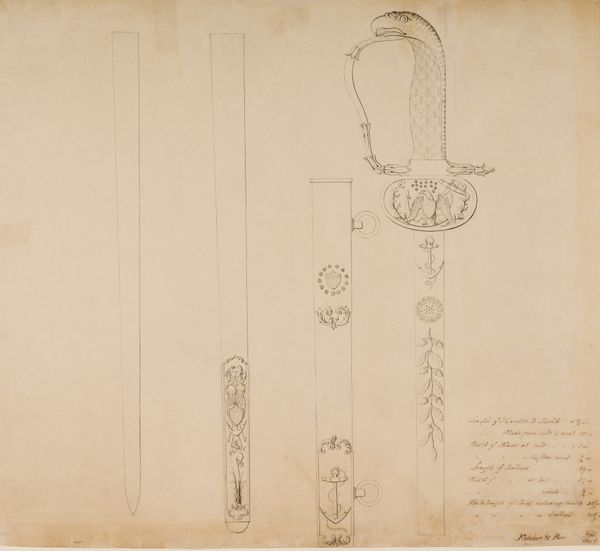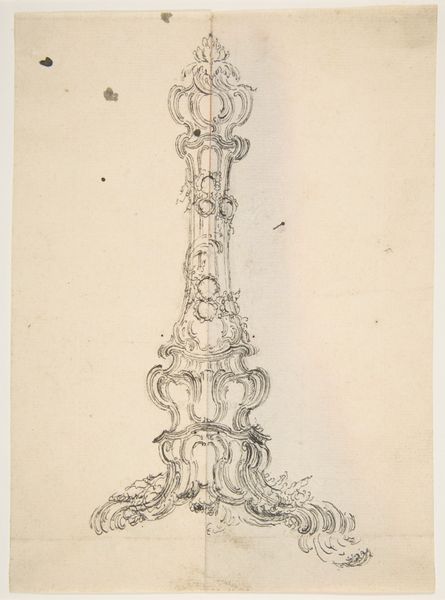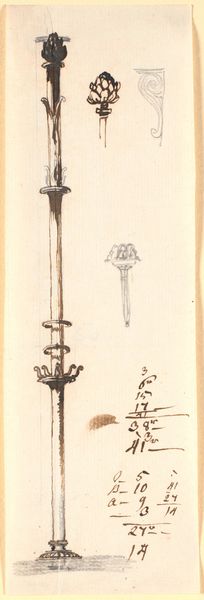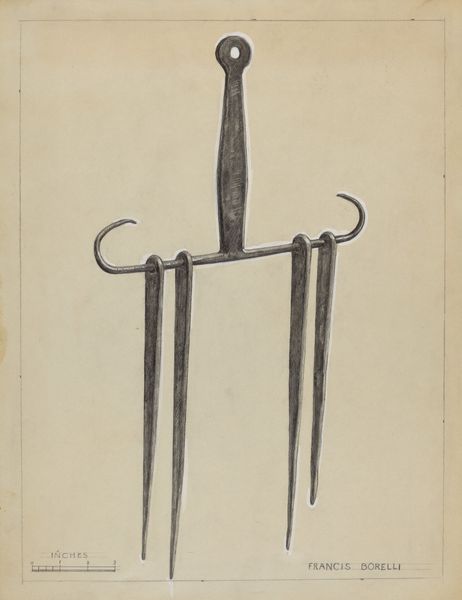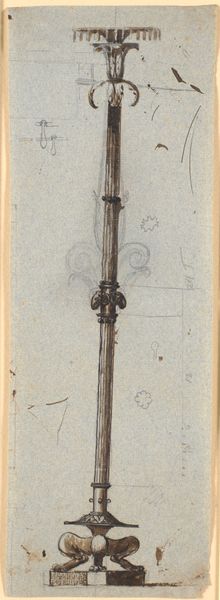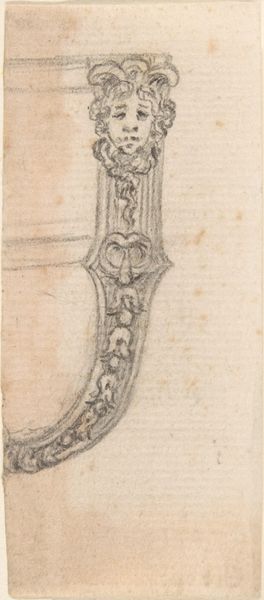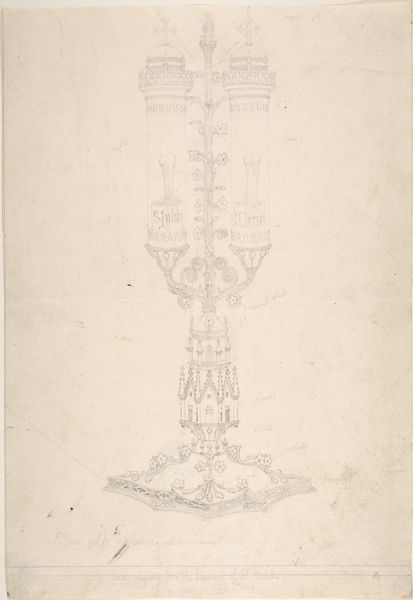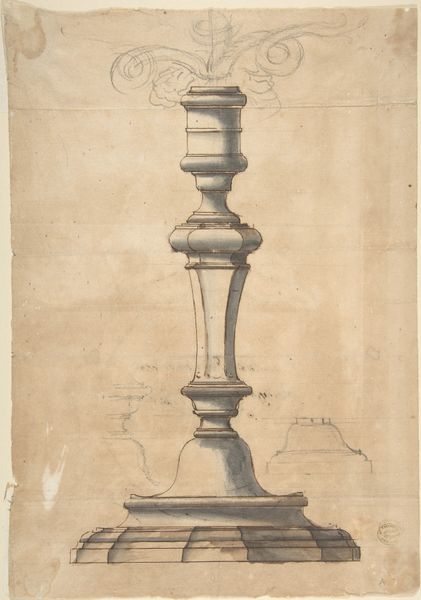
drawing, print
#
drawing
#
toned paper
#
light pencil work
# print
#
pen sketch
#
sketch book
#
hand drawn type
#
personal sketchbook
#
pen-ink sketch
#
pen work
#
sketchbook drawing
#
sketchbook art
Dimensions: sheet: 4 7/8 x 2 1/4 in. (12.4 x 5.7 cm)
Copyright: Public Domain
Curator: This intriguing sketch, simply titled "Key," was created by an anonymous artist sometime between 1850 and 1900. It is now held here at the Metropolitan Museum of Art. Drawn with light pencil work and pen on toned paper, this piece likely comes from a personal sketchbook. Editor: Immediately, the intricacy stands out. The detail feels almost baroque, but something about it also feels like a blueprint. A plan, perhaps. Curator: It’s fascinating to consider the symbolism embedded in something as commonplace as a key. We often view keys as symbols of power and access. Their appearance in art, and objects like this from sketchbooks, speak volumes. Editor: Exactly. This isn't just about literal unlocking. Who controls access? Who is locked out? In that era, particularly, questions of class, race, and gender access to spaces and opportunities would be literally dependent on these gatekeepers. It makes you think, doesn’t it? Even a simple key is steeped in politics. Curator: And this being a sketch, we are invited into the artist's intimate planning, their mind in progress, which is powerful. The toned paper gives it a soft, aged feel, fitting for its age, almost whispering stories of the past. Editor: The imperfections enhance its accessibility. It invites a reading of vulnerability and immediacy in a very interesting juxtaposition with what a key stands for and what kind of power a key holds. Curator: We see many similar objects presented in art throughout the same era; lockets, for example. They signify control over precious objects and can stand as signs for political issues of personal freedoms. Editor: The swastika like end, can be easily looked past and perhaps meant for no harm, but after further inspection and research, one could see that that emblem means a great deal more and needs to be seen critically and brought into context with social history. Curator: A simple drawing, yet a wealth of insights into the artist, their world, and the values they reflect, whether intentionally or unintentionally. Editor: Definitely a powerful symbol prompting critical discussion, especially regarding how architecture and social structures influence both conscious and subconscious symbol making.
Comments
No comments
Be the first to comment and join the conversation on the ultimate creative platform.

